The hot destinations that will spice up your travel life
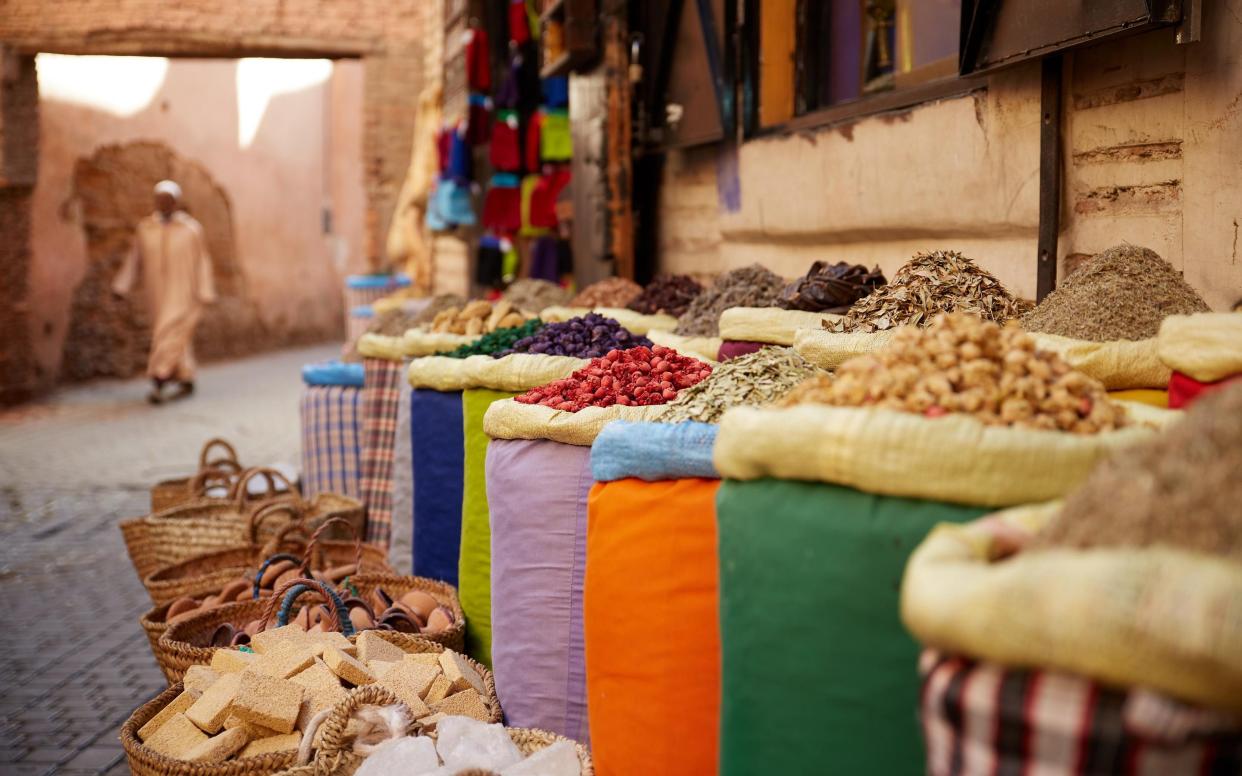
- Oops!Something went wrong.Please try again later.
The original plan, hatched by King Ferdinand and Queen Isabella, was to find a new western sea passage to the East Indies in order to avoid the trade tariffs imposed by the Venetian monopoly. Though the Santa Maria didn’t return to Europe laden with pepper, cardamom, cinnamon and cloves as planned, it did carry a cargo of new ingredients indigenous to the lands across the Atlantic.
Today it is hard to imagine curries without chillies, ice cream without vanilla, fish without chips, pizza without tomato, toast without smashed avocado, sweet shops without chocolate bars, or custard without corn flour. Yet not a single one of these ingredients was used beyond the Americas until just over 500 years ago.
While Columbus may have been an accidental pioneer of Caribbean tourism, he was relatively late to the game when it came to travelling in search of spices. Cinnamon, cassia, cardamom, ginger, pepper and turmeric had been traded since antiquity by the Austronesian peoples of south-east Asia. On the walls of the pharaonic Queen Hatshepsut’s tomb at Thebes, 3,500-year-old hieroglyphs tell of traders travelling south to a land known as Punt, in the horn of Africa.
Cinnamon, meanwhile, is mentioned by Herodotus in 500BC, revealing that the Arab merchants trading the spice kept its source a closely guarded secret, making up stories about how they had to collect it from the “nests of monstrous birds located in remote valleys full of deadly snakes” – an early example of creative marketing to justify a high price. Elsewhere, the Phoenicians were trading Levantine spices as far as Morocco – and even Cornwall – in their broad-bottomed single-sail cargo ships more than 3,000 years ago.
In the late second century BC, the merchants of the Ptolemaic dynasty in Egypt learnt from Arabian dhow sailors how to use monsoon winds to sail directly from the Red Sea to the west coast of India and back. The emerging Roman Empire provided them with a lucrative market for spices from the east, especially Indian pepper. Crushed, dried peppercorns increase the flow of saliva and gastric juices, increasing the appetite and enlivening the taste buds, thereby making salted meat and fish more palatable.
As salting was the only and universal form of food preservation at the time, demand for pepper quickly became insatiable. This interesting and lasting legacy is reflected in the fact that, even today, salt and pepper are the most ubiquitous seasonings on kitchen tables all over the world.
The cloves, nutmeg and mace that arrived in Kerala from the Indonesian “spice islands”, on the ships of Javanese merchants, then made their way to Byzantium via the souks of Aqaba, Cairo, Alexandria and Aleppo. When Constantinople fell to the Ottomans in 1453, Venetian merchants negotiated deals with the Mameluke sultans of Egypt to cement their exclusive access to spices arriving from the Indies, so that they could trade them at ever inflating prices around Europe.
Attempts to trade spices from the Levant (such as cumin, coriander, fennel and fenugreek) in exchange for pepper in Kerala failed as soon as Indian farmers discovered they could all be grown locally. Those spices quickly became ingredients in Indian masalas. Meanwhile, because oriental spices such as pepper were impossible to cultivate in the Mediterranean, their prices remained reliably high and fortunes could be made.
When Vasco de Gama arrived in India from Lisbon in 1498, laden with chillies from the new world, it was exactly the same story – every variety of capsicum he offered them could be cultivated easily in Asia. Locally grown chillies quickly became a pan-Asian addition to cuisine throughout the region, from Bombay to Bali.

The Portuguese navigation of a new eastern sea route around Africa to Asia paved the way for the emerging maritime nations of Europe to dominate the spice trade for the next 500 years. Spice traders, motivated by wealth and adventure, were the first global travellers. Today, many places on the spice routes have become destinations for tourists. And when we can travel again, there are some extraordinary places waiting, with some equally extraordinary local dishes to savour. Here are some of the best examples.
Pepper
India
The berries of the perennial vine Piper nigrum, indigenous to the forests of the Western Ghats along the Malabar Coast of Kerala, are picked unripe, dried in the sun, then graded to produce the pungent black peppercorns that for centuries were the most valuable traded spice in the world.
Keralan ports were a source of other Indian spices such as aromatic cardamom pods, long pepper and turmeric. Blessed with hundreds of miles of beautiful wild Arabian Sea coast, historic ports and sleepy backwater lagoons providing rich seafood harvests, the region is home to a lush interior where the villages are surrounded by coconut palms, mango trees and rice paddies.
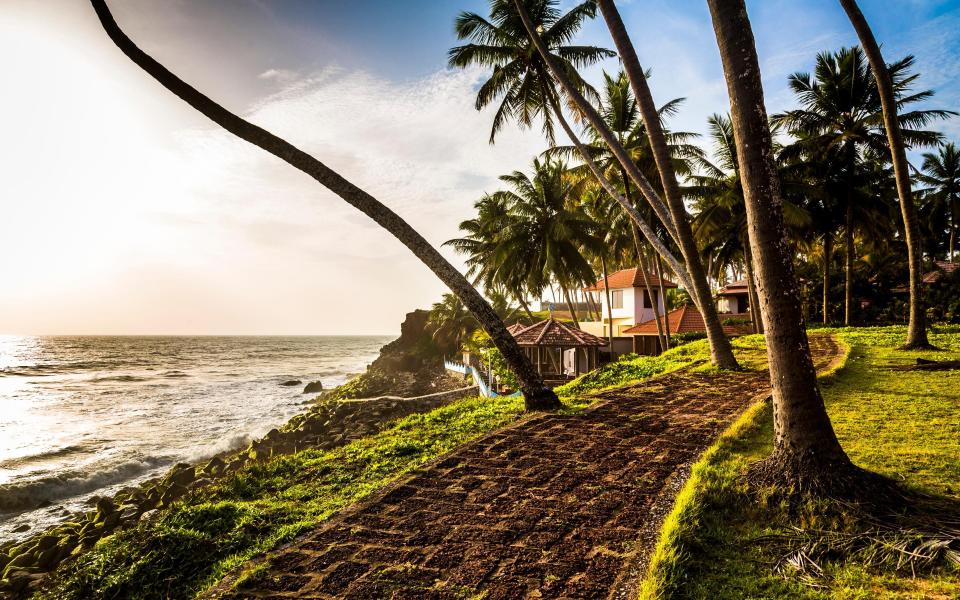
In its wildlife sanctuaries, elephants and tigers roam, while prolific plantations of spices, tea and coffee occupy the fertile slopes of mountains. Kerala is a land of abundant landscapes, but its cuisine and culture are just as generous.
When it comes to savouring the spice of Indian life, join the crowds of locals for a sizzling fresh fish masala from a makeshift stall between the Kubla Khan-era Chinese fishing nets on the evocative shore of Kochi harbour. Try Mangalore-style crab pepper fried in a chic beachside Meenakshi café at Neeleshwar Hermitage, on one of the deserted beaches of the north.
Or, for the ultimate Keralan culinary travel experience, cruise the verdant backwaters of the state on a converted rice barge at sunset. Watch the world go slowly by while feasting on a banana-leaf thali of rice surrounded by a multitude of taste explosions in the form of chutneys, pickles, salads, vegetable curries, tempered dal and masalas, served on a banana leaf and accompanied by a chilled Kingfisher beer.
A 14-day tailor-made Malabar Days of Kerala trip costs from £2,595pp, including flights, through Greaves India (020 7487 9111). Read our complete guide to the best hotels in India.
Chillies
Mexico
The chilli is one of the most cultivated spices in the world. Varying in strength from mild, sweet paprikas to the fiery cayenne and habanero varieties, chillies are indigenous to Mexico and were used in local cuisine 6,000 years before anyone beyond the Americas tasted one. The Aztecs also introduced early travellers from Europe, such as Columbus and Cortez, to ingredients including chocolate, vanilla, tomatoes, allspice, avocado and maize – all previously unheard of beyond their world.
To sample their punchy flavour, travel west to the whale-watching resorts on the Sea of Cortez in Baja California and savour spicy mariscos (seafood) tortillas served with zingy salsa bandera. Meanwhile, the food stalls of the energetic Abastos market in Oaxaca, which can be found beneath the ancient remains of the Zapotec pyramid of Monte Albán, are famous for their seven varieties of savoury mole chocolate sauce. Nearby, the Pacific coast is popular with surfers, and the resident beach shacks do a brisk trade in mezcal cocktails to accompany succulent ceviche.
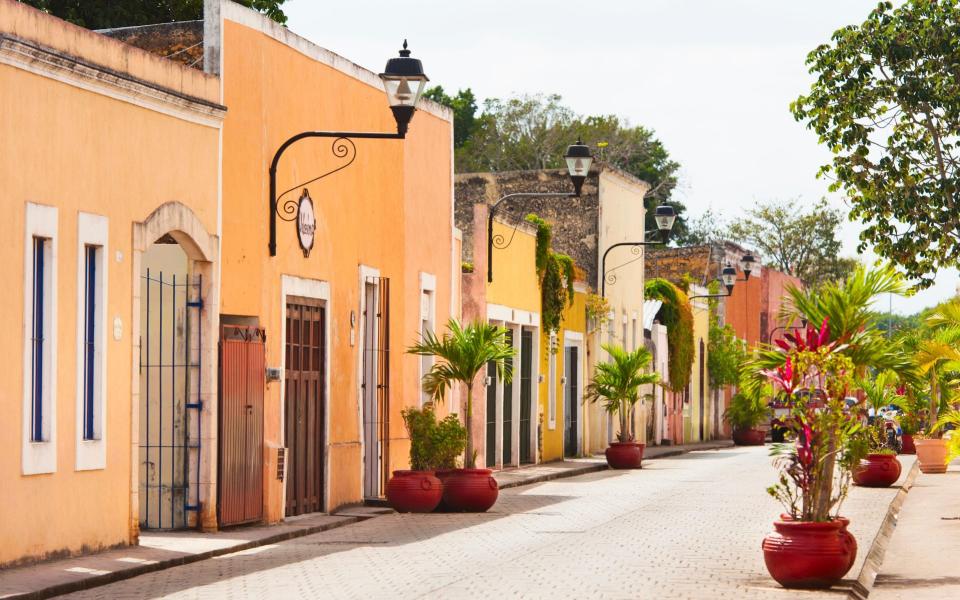
Serious chilli fans should head to Yucatán, home of the fiery habanero and the Mayan ruins of Uzma and Chichén Itzá, and order recado in one of the cool cafés of the elegant colonial-era town of Mérida. The cafes of Mexico City’s historic centre between the vast Zocalo plaza and the memorising market, La Merced, all serve superb classics from tortillas, tacos and tamales to corn on the cob, quesadillas and guacamole.
A nine-day Real Food Adventure small group tour of Mexico costs from £1,150pp, excluding flights, via Intrepid (0808 274 5111) . Read our complete guide to the best hotels in Mexico.
Wasabi
Japan
The most interesting aspect of Japan’s role within the spice routes has been its general reluctance to get involved. Historically insular, Japan boasts an exquisite and varied cuisine based entirely on home-grown ingredients. With a shortage of land to cultivate, the Japanese diet is centred on fish and seafood dishes that offer quality over quantity.
Wasabi, karashi, shiso and negi – Japanese versions of horseradish, mustard, mint and scallions, respectively – are all indigenous. Chillies are the most significant imported spice, and are now seen as an essential ingredient of shichimi togarashi, the most popular Japanese condiment after wasabi.
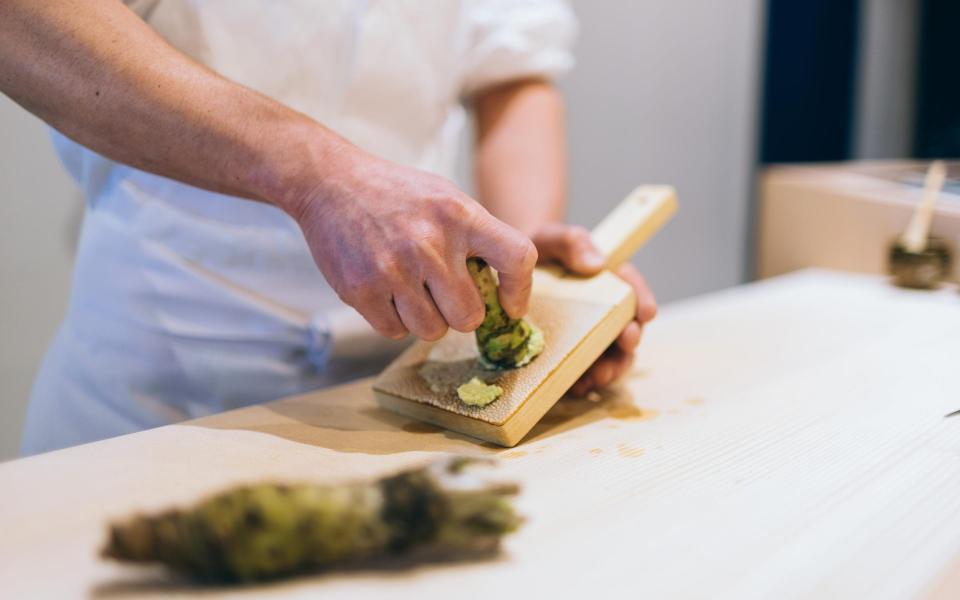
A tour of Japan offers a diverse range of culinary encounters. You can savour the ultimate melt-in-the-mouth hida wagyu beef, served on a low table in a rural ryokan guest house in the Japanese Alps, accompanied by home-brew mountain saki; or stay in a Zen shukubo lodge on Mount Koya, where you can feast on pure veg shojin ryori (“Buddhist meat”) after a traditional onsen hot tub bath. Learning how to make soba noodles in Tokyo and obanzai ryori home-style dishes in Kyoto is a must. Meanwhile, the freshest sushi in the world can be found at Tokyo’s Tsukiji Fish Market. Monjayaki savoury pancakes are finest in Tsukishima, while wagashi sweets at a tea ceremony in the old Samurai quarter of Kanazawa are also a highlight.
A 13-night self-guided Gastronomic Adventure costs from £2,950pp, flights excluded, with InsideJapan Tours (0117 244 3380). Read our complete guide to the best hotels in Japan.
Cinnamon
Sri Lanka
Harvested by stripping the aromatic bark off a tree which curls as it dries, cinnamon is unique to the island of Sri Lanka. These curls are sorted by size to be sold or shipped in bundles, then used whole or ground into a powder. Spice merchants sell the bundles in local markets where they are guaranteed to be fresh, authentic and superior to the cassia bark grown in China for which cinnamon can be mistaken.
Sri Lankan spice mixes are always roasted, ground and then added to a dish after cooking. One to look out for is suwada kudu (“fragrant powder”). Hoppers are bowl-shaped pancakes cooked in a small wok. Made from fermented rice flour and coconut milk batter, they are perfect for filling with coconut sambol and fried egg – the perfect Sri Lankan breakfast.
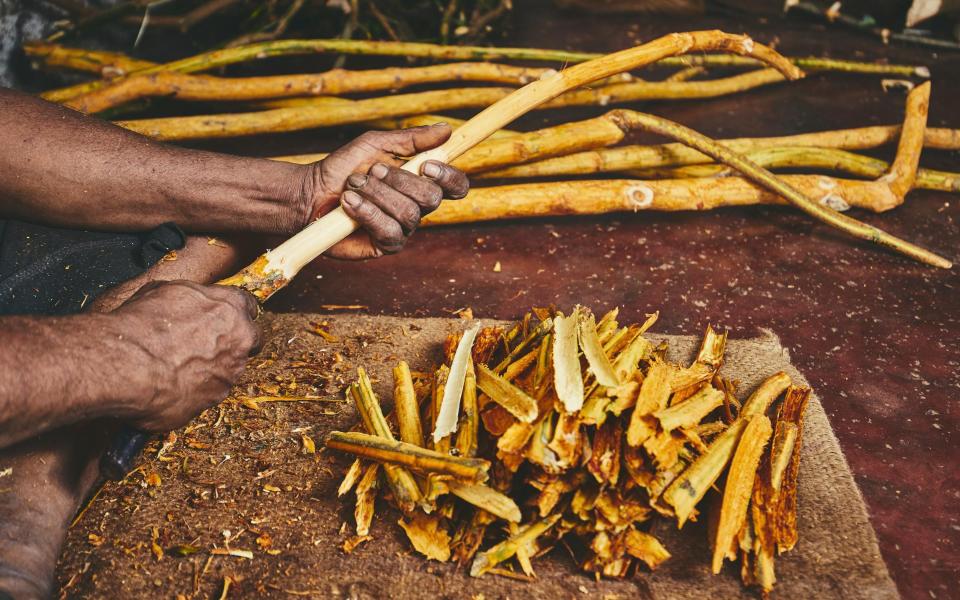
Although a relatively small island, Sri Lanka manages to pack in plenty of ingredients for a perfect holiday. Beyond the coconut palm-fringed beaches and antique sea forts along the Indian Ocean coast, the nation’s Hill Country is like a tropical version of the Lake District on steroids – a land of vast lakes, waterfalls and mighty peaks towering over ravines. Early morning mists are burnt off by the sun to reveal great vistas under deep blue skies, dotted with Buddhist temples, churches and tea planters’ bungalows.
A 14-night tailor-made Hill Country and Coast tour of Sri Lanka costs from £4,000pp, excluding flights, through Wix Squared (020 3808 6383; wixsquared.com)
Cloves and nutmeg
Indonesia
Cloves and nutmeg originated from the Moluccas, a small group of islands in eastern Indonesia more commonly referred to as the spice islands. Here, cloves are dried tree flowers with a sweet, pungent flavour and are used in sweet and savoury dishes, while nutmeg, the kernel of a seed with an aril lattice work covering, is removed to produce mace. So coveted was nutmeg in the 17th century that the island of Run, rich in the spice, was traded by the British East India Company to the Dutch VOC in exchange for ownership of New Amsterdam – the Dutch name for Manhattan, in the United States.
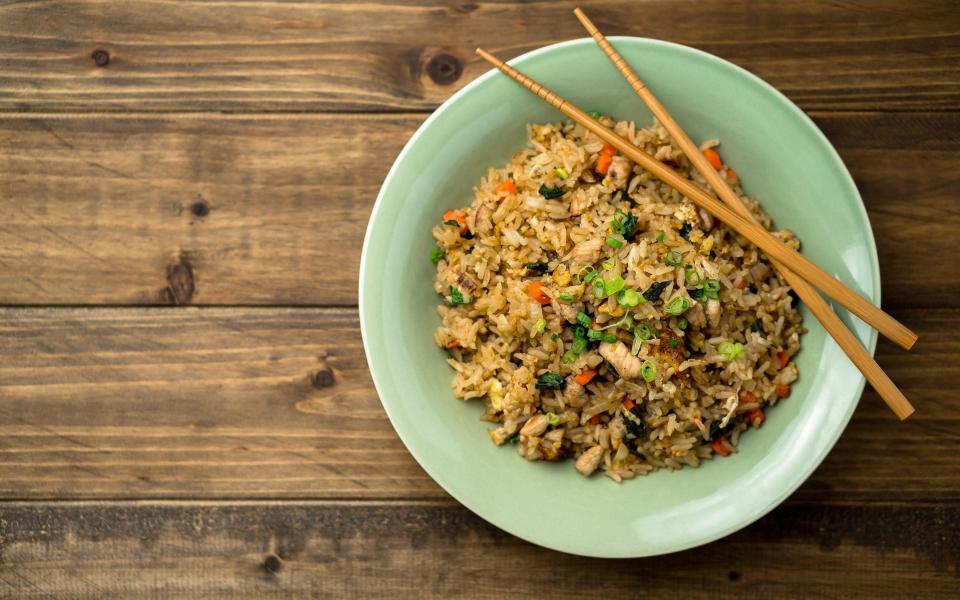
Today, most tourists head for the lively beach bars, coral reefs, ancient Hindu temples and dramatic volcanoes of Bali. Here, local markets and cafés are good places to find spices and mouth-watering Indonesian dishes such as nasi goreng fried rice and gado gado – a delicious salad of cooked vegetables with fried tofu or tempeh in a spicy satay dressing. Indonesia is made up of 17,000 islands, and more adventurous travellers can experience the serene magnificence of the hilltop Borobudur in eastern Java, the ominous dragons of Komodo, the steamy rainforests of Sumatra and the pristine limestone khast landscapes of Raja Ampat.
The actual spice islands were once rather difficult to reach, but they recently became popular as stopovers on luxury boat trips sailing around the eastern archipelagos – and they can easily be visited this way.
A 10-night trip (including seven spent aboard the stunning Aqua Blu, exploring the Spice Islands) costs from £9,550pp, excluding international flights, through Cazenove+Loyd (020 7384 2332). Read our complete guide to the best hotels in Indonesia.
Cumin and coriander
Jordan
Coriander and cumin, along with fennel, fenugreek, sumac and nigella, all originate from the fertile crescent at the eastern end of the Mediterranean known as the Levant. Seeds of these plants can be fried whole, or roasted and ground for use in stews, stir-fries, pickles and curries. The leaves of coriander and fenugreek are commonly used both in cooked dishes and as a garnish. Fennel seeds are eaten raw as a breath freshener, while nigella seeds are sprinkled on bread. All of them – along with saffron and the resins of asafoetida, frankincense and myrrh from Persia and Oman – have been part of the Jordanian economy for centuries.
Out of all of the countries of the Levant, Jordan is the most accessible for travellers. It it has plenty to offer visitors, from the romantic remains of the great first-century Nabataean city of Petra, to the awesome desert landscapes of Wadi Rum, the Roman ruins of Jerash, the crusader castle of Kerak and the colourful coral reefs and beaches of the Red Sea.

There is a 675km Jordan Trail walking route from the ancient Greco-Roman settlement of Gadara in the north to the Nabataean seaport of Aqaba in the south, taking in all these sites. Jordanian cuisine is typically Levantine, featuring the condiment za’atar – a blend of roasted sesame, dried thyme, oregano and ground sumac – which is best sprinkled over mouth-watering mezes of hummus, tabbouleh, olives, baba ganoush, kibbeh and labneh.
A nine-night tailor-made Ultimate Jordan trip costs from £2,800pp, including flights, with Scott Dunn (020 3811 6538). Read our complete guide to the best hotels in Jordan.
Ras el Hanout
Morocco
The perfect destination for a short break with an exotic twist, Morocco allows you to travel back three centuries in just three hours. Arrive in a magical land of souks, ancient medinas, storytellers, snake charmers, mountain villages, desert oases and nomadic shepherds. Morocco’s influence on the spice routes is centred around consumption and trade, not supply. This is reflected in the ingredients of its most popular spice mix, ras el hanout, a combination of spices that were delivered to ports such as Tangier, El Jadida and Agadir on the boats of Phoenicians, Venetians, Moors and Portuguese traders from every corner of the globe.
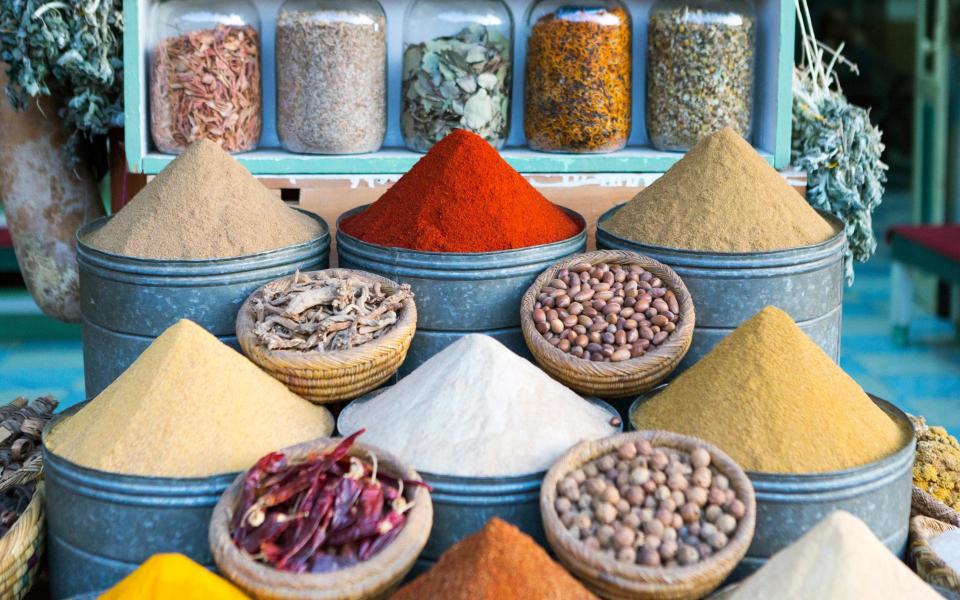
Flavour-filled Morocco is a culinary paradise of Berber, Arabic, Oriental and Occidental influences merging to create a fabulous culinary cocktail. Follow the aromas of the food stalls in the souks of Casablanca, and grab street snacks such as harira (chickpea) soup and makoudas (potato rostis) dipped in spicy harissa in the night market of Djemaa el-Fna in Marrakech. Share traditional meals, such as underground furnace-roasted mechoui lamb, with Berbers in the High Atlas.
Indulge in fresh seafood chermoulas in the ancient trading port of Essaouira, and aromatic couscous in the blue villages of the Rif Mountains. Delicate flaky b’stilla can be found in the medina of Fez, while hearty tajines can be enjoyed near the Kasbah of the Udayas in Rabat. A glass of gunpowder mint tea is best enjoyed in the company of the nomads of the Dra Valley, and you can learn how to make amlou from argon oil, almonds and honey with Chef Khalid on Royal Palm’s organic farm near Marrakech.
An 11-day tailor-made Morocco trip costs from £2,380pp, including flights, with The Ultimate Travel Company (020 7386 4646)
Historic ports where the spice is right
Zanzibar
Owing to quirks of history and trade, the Zanzibar Archipelago took over from the Molucca Islands as the world’s premier producer of cloves. Seeds from plantations of the Dutch-controlled Moluccas were smuggled by the appropriately named Frenchman Pierre Poivre in 1770 to the Isle de France (Mauritius). When Said bin Sultan, ruler of Muscat and Oman, moved his capital to Stone Town in the Indian Ocean in the 1830s, he brought cloves with him to establish huge plantations on Zanzibar alongside other cash crops of cinnamon, pepper and nutmeg.
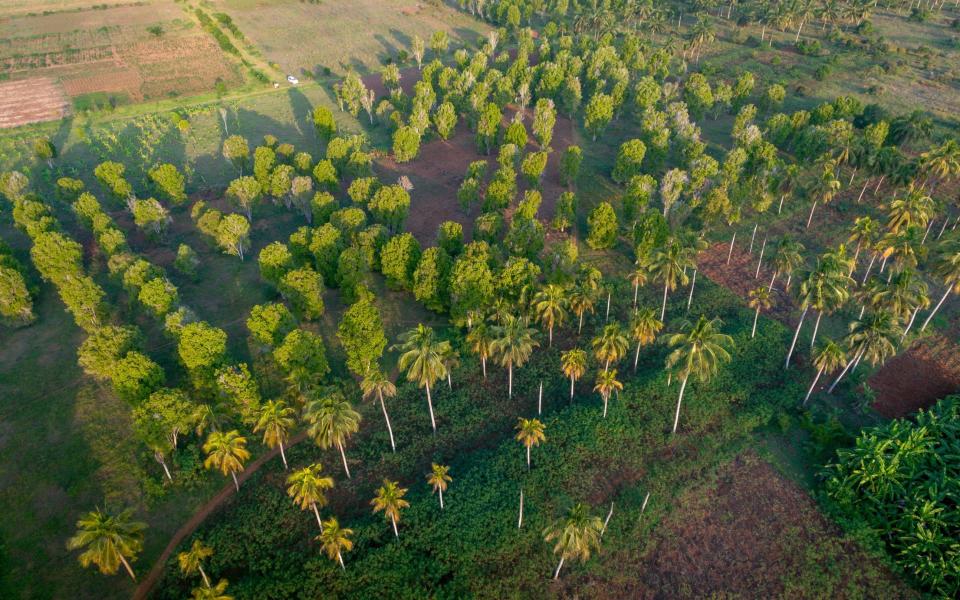
While the sultans are long gone and Zanzibar is now part of Tanzania – not to mention a popular tropical island paradise destination – the plantations are still thriving and spice tours feature on almost every tourist itinerary. Local snacks are easily found in the Forodhani night market of Stone Town – look out for mkate mayai fried eggy bread, urojo of roasted cassava and balls of mashed potato spiced with chilli, lime and ginger in a tangy stock. Alternatively, you can head offshore to Chumbe Island eco lodge and coral park for some sensational, authentic home cooking.
A 12-day Masai Mara and Zanzibar trip costs from £4,880pp, including flights (020 7386 4646). Read our complete guide to the best hotels in Zanzibar.
Venice
Evidence of the immense wealth accumulated by the merchants of Venice during their monopoly of the Mediterranean spice trade is abundant everywhere you look in the lagoon city. But for gastronomes, visiting Venice can be as much about its contemporary food culture as its past.
Dropping into a neighbourhood bacari for cicheti is almost a necessity – whether for lunch or early evening to sample an outstanding variety of aperitivos devoured with ombre (small glasses) of Veneto wine or bubbly prosecco. The best are guaranteed to be found hidden in the maze of side canals and lanes. Venetians stand at the bar or perch on bent wood stools as they pick and choose from the imaginative culinary creations on display; crostini topped with radicchio and ripe cheese; polenta with torn mozzarella and pesto; wafer-thin beetroot carpaccio; crunchy arancini risotto rice balls.
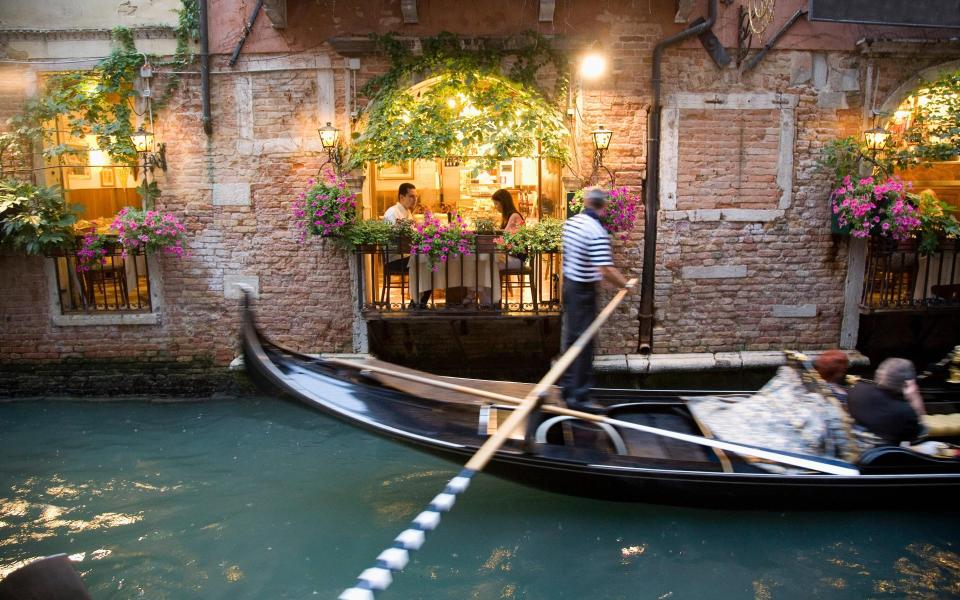
Aperitivo choices range from modest to magnificent and combine seamlessly with dinner or cena to become apericena; a leisurely meal made up of multiple plates of innovative taste and texture combinations. In the Mediterranean way, many are vegetarian: grilled vegetables steeped in olive oil, scattered with torn courgette flowers; creamy broad bean purée topped with garlic-infused bitter leaves; mushrooms filled with puy lentils and herby mascarpone – all served with slivers of farmhouse cheese, bowls of salty olives and soft focaccia or crusty country-style bread.
A five-night culinary experience of Venice with Bellini Travel, staying at the Aman and including a private tour and cookery class, costs from £2,850pp (020 7602 7602). Read our complete guide to the best hotels in Venice.
Lisbon
When a storm forced Columbus to take shelter in Lisbon on his way back to Cadiz, the Santa Maria’s cargo of New World ingredients did not go unnoticed and the race was on to find another route to the source of eastern spices. In 1488, the Portuguese navigator Bartolomeu Dias found his way around Africa and into the Indian Ocean, followed by Vasco de Gama. Thus began a new trade undercutting the Venetians and bringing great riches to the merchants of Lisbon – the wealth this brought is manifest in monuments such as the Belém Tower and the Pena Palace.
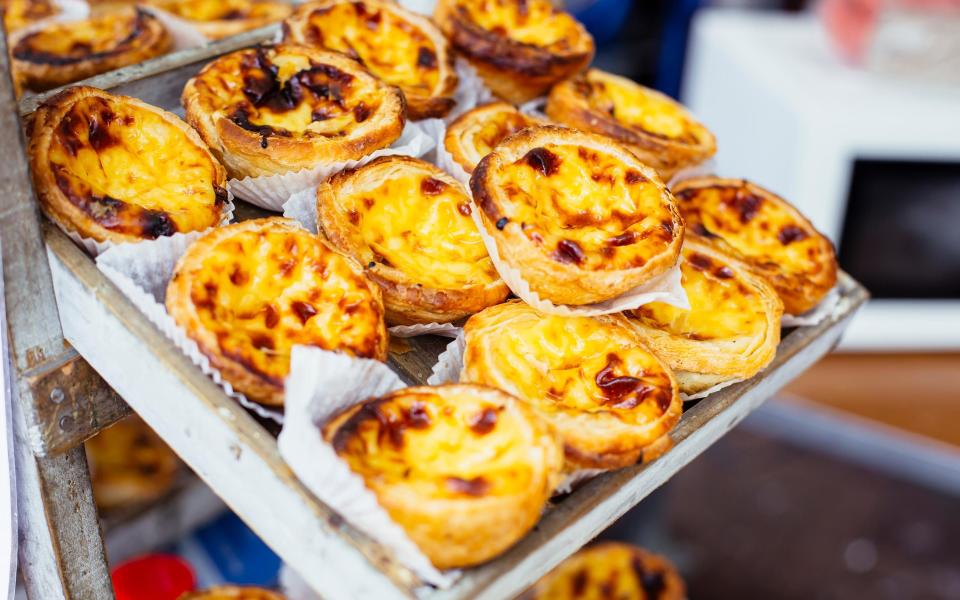
Meanwhile, the culinary legacy of Portugal’s post-1500 dominance of the spice trade is found in the cafés, markets and restaurants of Lisbon. Here, the wide variety of spices – piri piri, black pepper, paprika, cloves, cumin and nutmeg – are used in dishes such as frango roast chicken and bifana sandwiches of slow-cooked pork in white wine, garlic and spices, usually accompanied by a glass of ginjinha sour cherry liqueur. Cinnamon, vanilla, cardamom, aniseed, clove and allspice are used in the compulsory pastéis de nata custard tarts.
An eight-day Real Food Adventure small group tour of Lisbon and Porto costs from £1,840pp, excluding flights (0808 274 5111)

